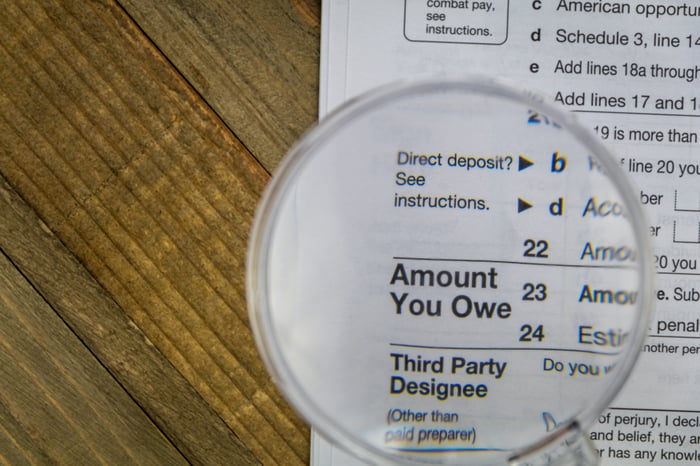A growing number of retirees are kissing a percentage of their Social Security check goodbye.
Social Security is a program most retirees would struggle to live without. Based on an analysis from the Center on Budget and Policy Priorities, America’s leading retirement program has reduced the poverty rate for adults aged 65 and over by nearly three-quarters — from an estimated 38.7% without Social Security to 10.2% with it, as of 2022.
More than two decades of annual surveys from Gallup confirm just how important Social Security income is to the financial well-being of retirees. Since 2002, between 80% and 90% of retirees have responded that their monthly Social Security check is a “major” or “minor” part of their income, including 88% in 2024. Most aging workers need their guaranteed payout to make ends meet.
Considering how important Social Security is to seniors, it should come as no surprise that the reveal of the program’s cost-of-living adjustment (COLA) is the most-awaited announcement each year. Although the veil has been lifted on Social Security’s 2025 COLA, an unpleasant surprise still awaits some beneficiaries in the new year.

Image source: Getty Images.
Social Security’s COLA serves an important purpose
The program’s COLA that you’re always hearing about has to do with the benefit adjustment applied most years that accounts for the inflationary pressures beneficiaries are contending with.
As an example, if the price for a basket of goods and services regularly purchased by retirees climbs by 2%, benefits would also need to rise by 2% to ensure that program recipients can still purchase the same amount of goods and services. Social Security’s cost-of-living adjustment is this “raise” designed to help benefits stay on par with the prevailing inflation rate.
Prior to 1975, Social Security’s COLA was assigned arbitrarily by special sessions of Congress. Between the first retired-worker check mailed in January 1940 and 1974, only 11 COLAs were passed along. But when these cost-of-living adjustments were administered, they were often doozies, such as the 77% raise in 1950.
Starting in 1975, the Consumer Price Index for Urban Wage Earners and Clerical Workers (CPI-W) became Social Security’s inflationary measure used to calculate COLAs on an annual basis. It sports over 200 separate spending categories, all with their own unique weightings.
Even though the CPI-W is reported monthly by the U.S. Bureau of Labor Statistics, only trailing-12-month readings from the months ending in July, August, and September (i.e., the third quarter) factor into the COLA calculation. If the average third-quarter CPI-W reading increases in the current year from the comparable period of the previous year, inflation has occurred and benefits will climb in the upcoming year.
The year-over-year percentage increase in average third-quarter CPI-W readings, rounded to the nearest tenth of a percent, represents the COLA passed along to beneficiaries.

A notable uptick in the prevailing rate of inflation has led to four consecutive years of above-average COLAs. U.S. Inflation Rate data by YCharts.
A fourth straight above-average cost-of-living adjustment is headed beneficiaries’ way
Throughout the 2010s, Social Security beneficiaries had little to look forward to. There were three years when deflation occurred (i.e., prices fell year over year) and no COLA was passed along (2010, 2011, 2016). Further, the smallest positive COLA on record was administered in 2017 (0.3%).
However, things have shifted in a pretty big way this decade. Abundant fiscal stimulus during the COVID-19 pandemic sent U.S. money supply soaring, eventually giving way to the highest prevailing rate of inflation we’ve witnessed in four decades. This resulted in COLAs of 5.9% in 2022, 8.7% in 2023 (the highest on a percentage basis since 1982), and 3.2% in 2024.
Although the rate of inflation is currently decelerating, this didn’t stop Social Security’s 2025 COLA from, once again, coming in above its recent average. Whereas the average cost-of-living adjustment over the prior 15 years is just 2.3%, beneficiaries are looking at a 2.5% raise for the upcoming year.
Based on estimates from the Social Security Administration, a 2.5% COLA will translate into a $49-per-month boost for the average retired worker, increasing their payout to $1,976 in 2025. Meanwhile, the average worker with disabilities and average survivor beneficiary will see their respective payouts each climb by $38 per month to an estimated $1,580 and $1,551 in the new year.

Image source: Getty Images.
An unpleasant surprise awaits a surprising number of retirees in 2025
On the surface, things look pretty good for Social Security’s retired-worker beneficiaries. But if you do a bit of digging, you’ll discover that Social Security’s 2025 COLA is a bit of a double-edged sword.
Generally, bigger benefits are a welcome sight for retirees. But as Social Security checks have grown over time, they’ve exposed a greater percentage of retired workers to the federal taxation of benefits. Yes, a portion of your Social Security check may be taxed at the federal level, as well as in nine states.
In 1983, Social Security’s asset reserves — the excess income collected since inception that hasn’t been paid out in benefits or used to cover administrative expenses — were nearly gone. If elected officials hadn’t acted, sweeping benefit cuts may have been necessary.
The Social Security Amendments of 1983 gradually increased the full retirement age and payroll taxes on workers and introduced the taxation of benefits. Beginning in 1984, up to 50% of benefits could be taxed at the federal rate if the provisional income (adjusted gross income + tax-free interest + one-half of benefits) of a single filer or couple filing jointly topped $25,000 and $32,000, respectively. In 1993, the Clinton administration added a second tax tier, which allowed up to 85% of benefits to be taxed for single filers and couples who topped $34,000 and $44,000 in respective provisional income.
The quirk with these provisional income thresholds is that they’ve never been adjusted for inflation. When the original tax tier was introduced four decades ago, it was expected to apply only to around 10% of all households receiving benefits. But with COLAs steadily increasing payouts over time, a higher percentage of retiree households are becoming subject to this tax. The 2.5% COLA in 2025 should expose even more retirees to this hated tax.
Although most seniors would love to see the taxation of Social Security benefits shelved, the reality is that this tax isn’t going anywhere or getting adjusted for inflation after multiple decades. According to the 2024 Social Security Board of Trustees Report, the program is staring down a $23.2 trillion funding obligation shortfall through 2098. Social Security needs all the income it can get…and that includes the federal taxation of benefits.

